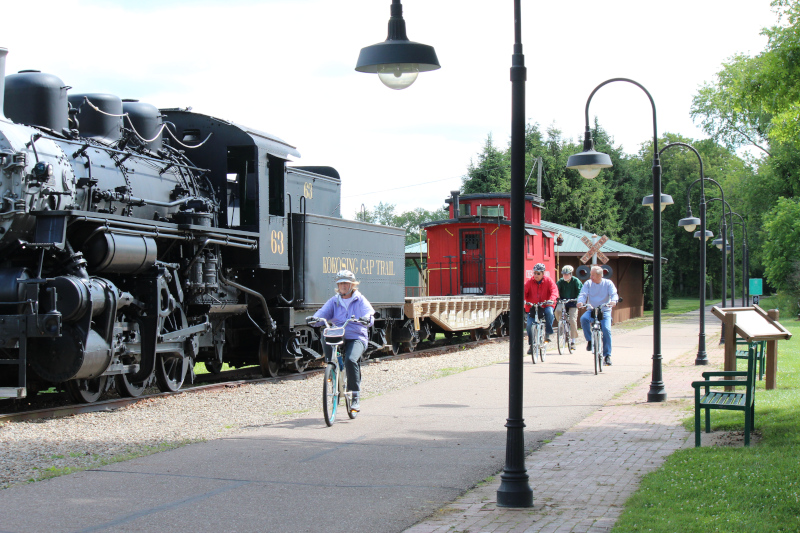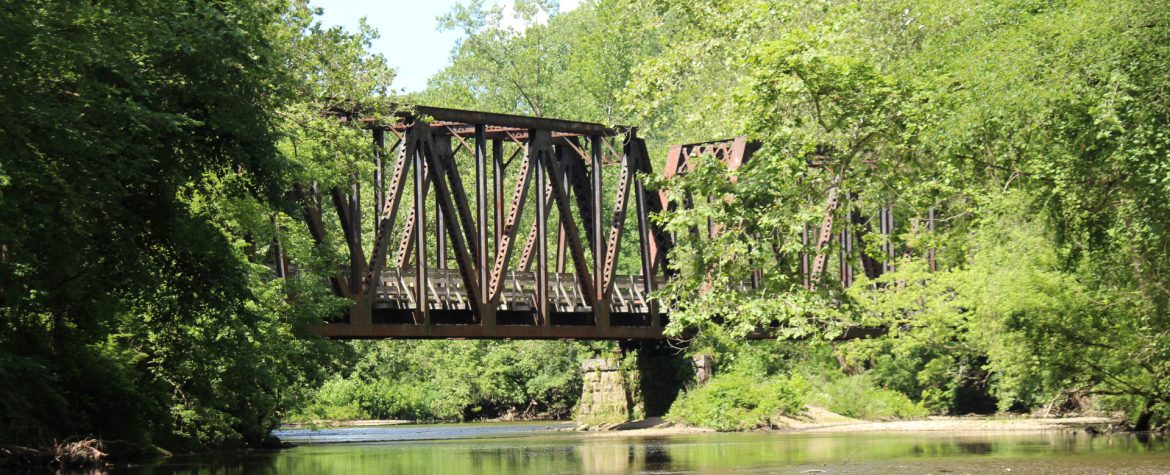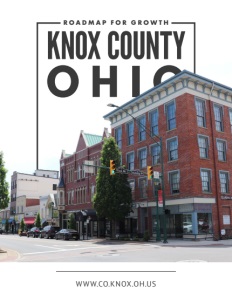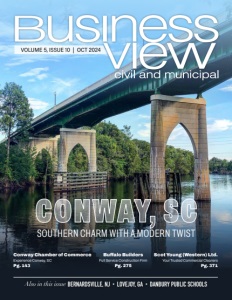Knox County, Ohio
Roadmap for Growth
Housing, Industry, and Workforce Development Take Center Stage for this Dynamic County
Knox County, Ohio, is a rich blend of history and innovation stretching out over two centuries. Located in the heart of the Buckeye State, the county is named after Henry Knox, a Revolutionary War general and the first Secretary of War under George Washington. “The county was founded in 1803, right after Ohio became a state,” explains Jeff Gottke, President of the Knox County Area Development Foundation. “Mount Vernon, our county seat, came along in 1805 and was named after Washington’s estate.”
Throughout its history, Knox County has evolved from a small farming settlement into a region rich with educational institutions and industrial prowess. One of the county’s most distinctive institutions, Kenyon College, the state’s oldest private college. Is celebrating its 200th anniversary this year, Gottke points out. “But, we’re lucky to have not just Kenyon, but also Mount Vernon Nazarene University and a campus of Central Ohio Technical College.”
Industry has long been a backbone of Knox County’s economy. Its industrial history began in 1833 with Charles and Elias Cooper’s iron foundry in Mount Vernon, which evolved into Cooper-Bessemer, the largest diesel engine manufacturer in the U.S. “They were known for producing large power generation systems,” notes Gottke. Ariel Corporation, founded locally in the 1960s, is now a global leader in natural gas compressors. “Chances are, natural gas in your house has gone through an Ariel compressor,” says Gottke. The region also pioneered glassmaking with Pittsburgh Plate Glass and the innovative “Pennvernon process.”
Workforce Development
Knox County’s approach to economic growth isn’t just about attracting new businesses; it’s equally focused on preparing the local workforce to meet the needs of critical industries. The Area Development Foundation, a nonprofit tasked with spearheading economic development, plays a central role in these efforts.
One of its most significant initiatives revolves around partnerships with local educational institutions for workforce development. According to Gottke, the major focus is to steer students toward careers in manufacturing and healthcare—two sectors that employ a substantial portion of the local population. “Manufacturing accounts for about 22% of our employment, and healthcare is around 17%,” he explains. “Those are significant economic driving sectors here.”
Knox County embeds workforce development professionals directly in schools to guide students toward local job opportunities. “One individual is dedicated to working with Mount Vernon City Schools, another with all other county high schools, and a third focuses on career exploration for K-8 students,” says Gottke. These professionals are pivotal, especially for high school seniors. “Every graduating senior participates in a meeting regarding post-high school plans which often leads to guiding them toward opportunities in manufacturing and healthcare.” This early engagement helps combat outdated perceptions of manufacturing. “There’s still that stigma… but the reality is very different today,” Gottke notes, highlighting modern manufacturing’s meaningful work, clean environment and healthy wages.

Higher Education and Workforce Integration
Knox County’s partnership between local colleges and workforce development efforts is vital to sustaining a competitive economy as well. The county is home to three distinct higher education institutions, each contributing in its own way to the local talent pipeline. Gottke emphasizes how the diversity among these colleges creates unique opportunities without pitting them against one another. “Kenyon is a four-year liberal arts college with a national draw. Its focus is broad learning. Most of its graduates move into fields like nonprofit work, research, finance or go on to grad school,” he explains.
On the other hand, Mount Vernon Nazarene University (MVNU) has more of a regional draw, offering a Christian-centered education. Meanwhile, Central Ohio Technical College (COTC) plays a pivotal role in workforce development. “COTC is our technical college, and we work closely with them to provide in-demand technical programs, like nursing, here in Knox County,” says Gottke, highlighting a crucial partnership for industries like manufacturing and healthcare, which are always looking for skilled workers.
Commercial Opportunities in Knox County
While Knox County’s industrial roots run deep, its approach to commercial development is rapidly evolving to attract new business and diversify the local economy. The county’s land bank plays a crucial role in this growth. “We manage the Knox County Land Bank, which is the real estate arm for local government,” Gottke explains. One of the most significant properties under the land bank’s control is an expansive 47-acre site with over 700,000 square feet of space across ten buildings, called Heartland Commerce Park (HCP).. “We own that facility and are marketing it for manufacturing and commercial opportunities,” he adds. Its close proximity to the Columbus market, and location in the middle of Mount Vernon, make it a sought-after property.
HCP is being positioned to continue supporting industry. “It’s really built for manufacturing,” Gottke says, although he notes that some spaces within the complex could be repurposed for commercial use or even potentially nonprofit organizations. The county is also investing in the site, by building a new transit center there. “This will become a workforce and transportation hub,” he points out, further enhancing the appeal for businesses looking to tap into the local labor force.
Addressing the Housing Shortage
Like many regions across the country, Knox County faces a housing shortage, exacerbated by growing demand and a lack of new development over the past two decades. “The city has 1,500 housing units in the pipeline that should be built between now and 2027,” Gottke says. With various housing options planned, from market-rate apartments to single-family homes, the county aims to alleviate the strain on housing availability and attract diverse residents.
“Most of the new development is focused on market-rate apartments,” explains Gottke. However, that’s not everything. “There is also about 350 owner-occupied homes in the works, including single-family homes, patio homes, townhouses, and some senior living options.” This variety in housing types is a deliberate strategy to accommodate various needs, from young professionals to retirees.
Knox County’s growth strategy aims to balance residential, commercial, and industrial development. “The 1,500 units are really just meeting pent-up demand from the past decade,” says Gottke. The county needs about 2,500 new housing units by 2030, following a “retail follows rooftops” model—focusing on housing first to attract retail and commercial growth. This push is driven by local employers’ needs. “There’s a huge demand for housing and workers,” Gottke notes, emphasizing that the goal is to provide options for local talent rather than solely attracting outsiders.
Building Infrastructure for Growth
Knox County is laying the groundwork for future expansion without requiring extensive overhauls to its core utilities. “We’re fortunate that our municipal water and sewer systems currently have the capacity for growth,” Gottke says, highlighting that large-scale infrastructure upgrades, like water treatment plant expansions, aren’t necessary right now. However, the county’s infrastructure efforts are concentrated on transportation, with projects underway to improve access for residents and the workforce.
At the center of these efforts is a new transit facility, which marks a significant upgrade for public transportation in the county. “The new transit facility for our public transit entity will be their new operations center, but more importantly, it’s the first time we’ll have fixed locations where people can go and catch the bus,” explains Gottke. This hub will serve as a cornerstone for improving access to key areas in the community, particularly for those without easy transportation options.
The primary focus of the transit system is to connect residents with essential services and employment opportunities. “It’s designed to take people to work, healthcare, or shopping destinations,” says Gottke. This system doesn’t involve trains but will rely entirely on buses, which are more practical for the county’s needs. The new transit hub will also include park-and-ride facilities, making it easy for residents to leave their cars behind and hop on a bus.

Tapping into Recreation and Tourism
Knox County’s parks and outdoor amenities serve as both a local treasure and a key draw for visitors, blending recreation with a growing focus on tourism. “There are three recreation trails in the county that all connect as part of the Ohio to Erie Trail network,” Gottke explains. This means cyclists can travel from the Ohio River to Lake Erie, passing directly through Knox County—a unique feature that positions the area as a destination for outdoor enthusiasts.
At the heart of the county’s outdoor offerings is Ariel-Foundation Park. “It is the crown jewel of our parks,” Gottke says, referring to the 250-acre park that has transformed a former industrial site into a sprawling community resource. Once home to the Pittsburgh Plate Glass plant, the park now serves as a hub for recreation, with two of the county’s main bike trails converging there. The park’s industrial history, combined with its modern amenities, provides a distinct mix of the old and the new, making it a standout feature for residents and visitors.
Beyond biking, the county boasts a variety of other outdoor assets, including two state-designated scenic rivers and several recreation lakes. “We’ve got at least half a dozen county parks and two or three recreation lakes,” adds Gottke, noting that these natural resources draw tourists for activities like fishing, camping, birdwatching, and boating. While Knox County may not be home to state or national parks, its local parks offer a rich outdoor experience that appeals to tourists seeking scenic views and tranquil settings.
Priorities for Growth
As Knox County looks toward the future, its leadership has a clear set of priorities focused on sustainable growth across multiple fronts. “Our priorities would be to continue to attract housing to the county,” says Gottke, identifying the need to expand residential development beyond Mount Vernon and into the county’s smaller villages. The goal is to distribute growth evenly, ensuring that all corners of Knox County benefit from the surge in housing demand, without sprawling into the countryside and losing its rural character..
Simultaneously, industrial development remains a key focus. “We need to identify and develop more shovel-ready industrial sites,” Gottke states, recognizing that Knox County’s future depends on filling current demand and preparing for new opportunities. With a strong foundation in manufacturing and growing transportation infrastructure, the county is positioning itself to attract businesses that require immediate access to well-prepared, fully-equipped sites.
Another top priority over the next 18 months centers on talent. “We’re going to continue our talent attraction and workforce development efforts,” Gottke says. With local employers eager to fill open positions, the Foundation is prioritizing initiatives that prepare and retain local talent and draw in new workers to meet the needs of industries like healthcare and manufacturing. These efforts are key to ensuring that the county’s economy remains competitive and can sustain long-term growth.
AT A GLANCE
Knox County
What: A county focused on expanding housing, industrial development, and workforce programs to support economic growth
Where: Central Ohio
Website: https://co.knox.oh.us/
PREFERRED VENDORS
UMD Automated Systems – www.umdautomatedsystems.com
UMD has extensive experience in developing material handling solutions for the tire & rubber and tier 1 automotive industries. We offer comprehensive services to all customers that require material handling and conveyor system solutions. We don’t offer a single solution, we offer a commitment to growth.







